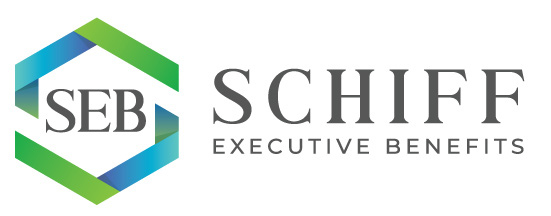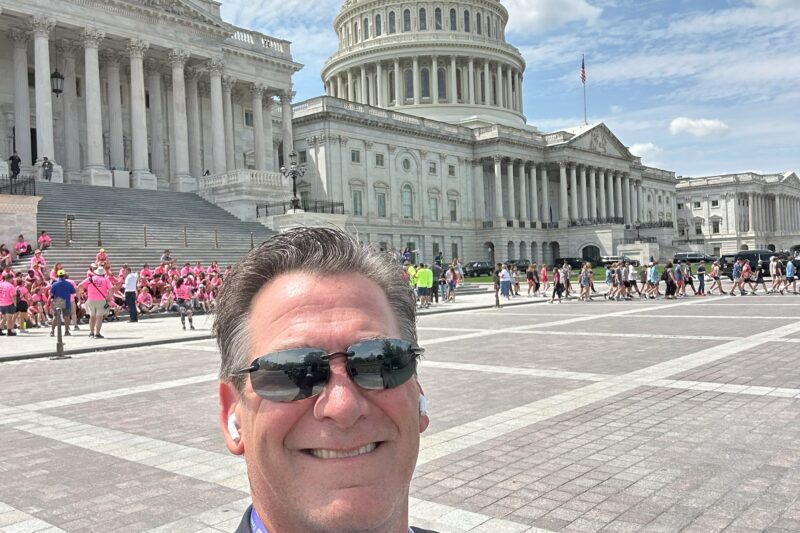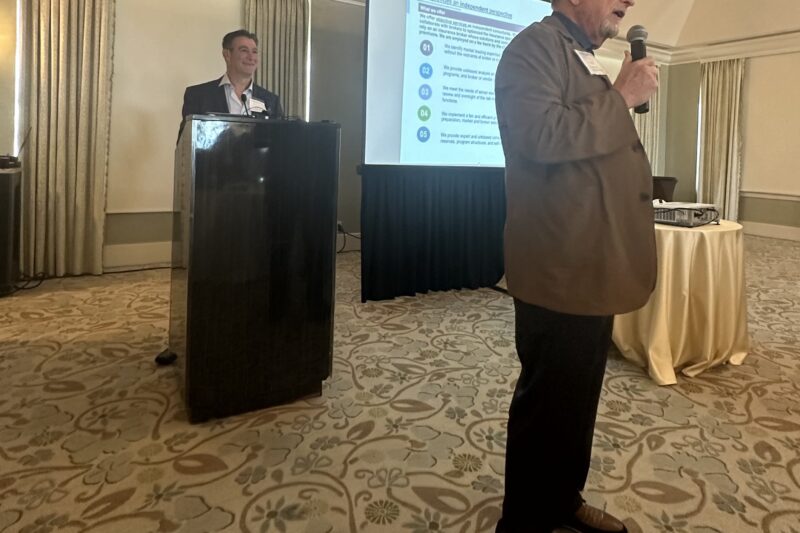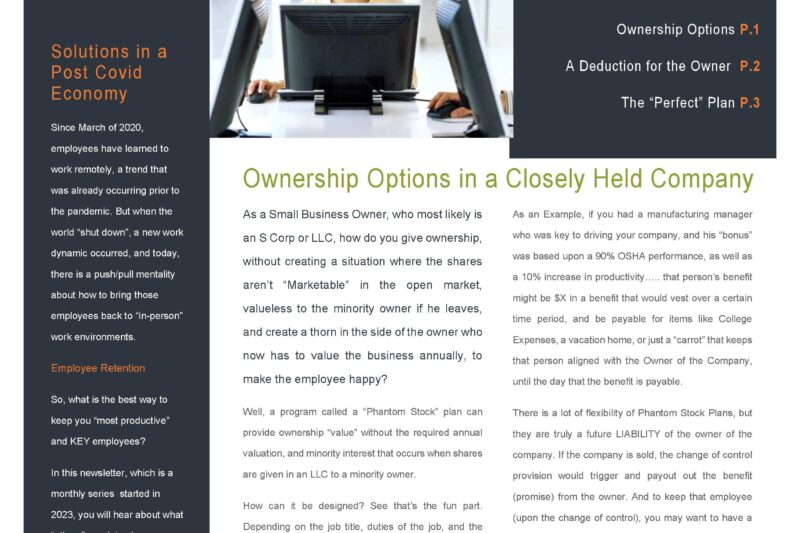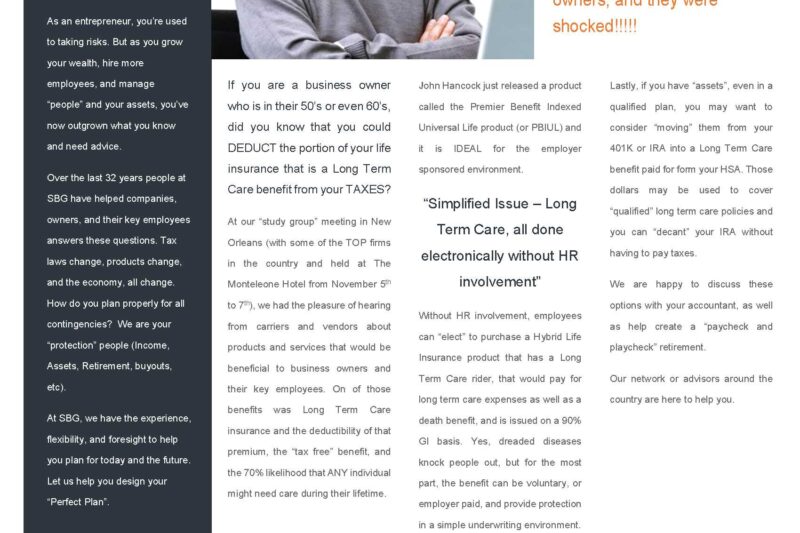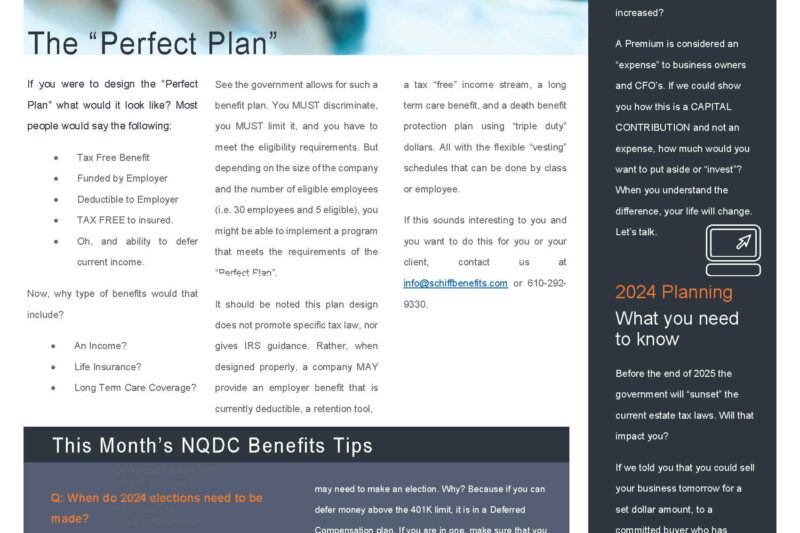If you are a business owner or decision making executive, how would you want to design The Perfect Plan™ to retain and reward your employees? A 401K is terrific for basic retirement savings, but there are limitations to how much you can put in, and it must be given to everyone on a proportional basis.
In this episode, we discuss the decision making process, how you can get the perfect timing of your deductions, and include the people and benefits that are needed most, in the most tax efficient manner. No two companies are alike, and neither should your plans be.
Come and listen to this podcast as we lay it out for you.
https://youtu.be/jKzJWj8SbRQ
Are you a fan of Arli$$ the TV Show? Do you remember what the premise was? It was about a glitzy sports agent played by Robert Wuhl who is in the big-money world of professional sports and entertainment, playing the eternally optimistic and endlessly resourceful L.A. sports agent Arliss Michaels, whose Achilles' heel is his inability to say "no" to clients and employees.
In this episode, we have the pleasure of sitting down with the man that the show was based off of, Dennis Gilbert of Paradigm Gilbert (a Higgenbothom Partner), as he goes into how Bobby Bonilla came about, what it was like to get started in the insurance industry, his stint in baseball and how he brought his passion for the game together with the financial services world.
https://youtu.be/iz5oKmVcRns?si=zvo-o7hNFcsTGAnK
This week we get to hear from Dan Murphy and Eric Eklund of The Ridgeback Group as they share the synergy of SEB and RBG coming together. Over fifty years of familial relationships are in this episode. The history, the friendship, and the future of this partnership as part of Ridgeback's "Network of Networks".
In a PERFECT world, how would you design a "benefit" plan for you (the Business Owner), your key executives, and your family? Well, in this Episode, Matt goes through some design options available when starting a brand new plan. In essence, you have a blank piece of paper that allows you to build it YOUR way.
Sit back grab your coffee, and listen to some options available to you depending on your role.
https://youtu.be/VUsv8NaXsrc
Are you a business owner? Have you ever thought about selling your business? How much is it worth? Do you have other shareholders, or family that own part of the business?
Well, in this, the Sixth episode of The Perfect Plan, Dan Zugell, my friend and colleague of 25 plus years goes into the wonder of an Employee Stock Ownership Plan (ESOP). In this qualified retirement plan solution for a business owner, you have a ready and willing buyer, that will buy your business, for a set dollar amount, at a set triggering event. If done correctly, you as the business owner can still run it, control it, and participate in the future growth of your company.
Dan goes into the benefits, tax advantages, and rules of how to design "the perfect" exit strategy for the closely held business owner. Take a few minutes and hear what he has to say, then contact us on how we can help you monetize your largest asset.
Ps. You can schedule a direct call with Dan at https://dantheesopman.com/ or with SEB at Calendly - Matthew E Schiff
As a business owner, how do you keep your best people and properly plan for yourself and your executives? Well, Bud Schiff, past President of Mutual of New York (MONY), past president of NYLEX Benefits, managing director of Alvarez and Marsal gives his insight of over 50 years in this podcast about employee retention strategies.
If you want to find a way to "retain" your best employees in a post no "non-compete" environment, listen up, and then give us a call. It's easier than you think, and it costs more to retrain a new hire, than it is to retain your best employee.
Are you an Attorney, Accountant, TPA, Trust Officer, Insurance Agent, Property and Casualty agent? If you work with Business Owners, and their families, then you want to be at this meeting where you will hear about how to COLLABERATE with other professionals who work with your client.
We will spend the day on Thursday, May 16th at the Fitler's Club in Philadelphia sharing a case study that is VERY relevant in today's world. How do you handle the intricacies of the family while bringing together all needed advisors to work seamlessly?
Well, we will have 20-25 attendees from different professions, coming together to discuss the challenges that they are facing with their clients in 2024. Come join us, and network with some of the best in their fields.
P.S. The night before, we have a Box at Citizens Bank Park for the game between the NY Mets and the Philadelphia Phillies (@6:40pm).
Sign up below to save your spot.
We are thrilled to have Tom Hegna, past Senior Vice President of New York Life's Annuity division on to discuss how to Retire Happy, regardless of your age. In the Third Episode, Tom gives you insights into what you should do, when you should do it, and what PRODUCTS, you should have to retire HAPPY.
P.S. If you want to learn more for your specific situation, click on the form to the right to have your "Perfect Plan" designed based upon your goals.
https://youtu.be/jQ7xGYpVHp0?si=yOWXs1To9Ba6N8yy
#RetireHappy #PerfectPlan #Income #IncomeAnnuity #Annuties #LifetimeIncome
Check out the Latest Trends in Executive Benefits in the latest Schiff Executive Benefits (SEB) Newsletter. This month, learn:
- How to "monetize" your business while still controlling it (ESOP)
- How to retain key employees with a deductible benefit that has a risk of forfeiture
- Implement a Long Term Benefit on a Company wide Basis (with little to no underwriting)
In today's post COVID world, are you finding it hard to keep your best people happy, while making sure that you don't overpay the rank and file employees? Well maybe a Phantom Stock Plan, informally funded using key man life insurance, might be an answer.
Check out this sample program from one of our carriers, Guardian. It outlines these benefits in easy, simple to understand discussion pages, and then shows you the cash flow from the business, the benefits provided to the participant and his family in case of pre-retirement death, and the flexibility available to the company in funding this benefit, that, depending on the age and tenure of your employee, can provide a significant supplemental income at retirement that prevents them from leaving for a few extra thousand in compensation
Click on the following link for a copy of a Phantom Stock Sample. Then, if you'd like to a have a custom design done for you or your company, give us a call at 610.292.9330 or send us an email at info@SchiffBenefits.com.

